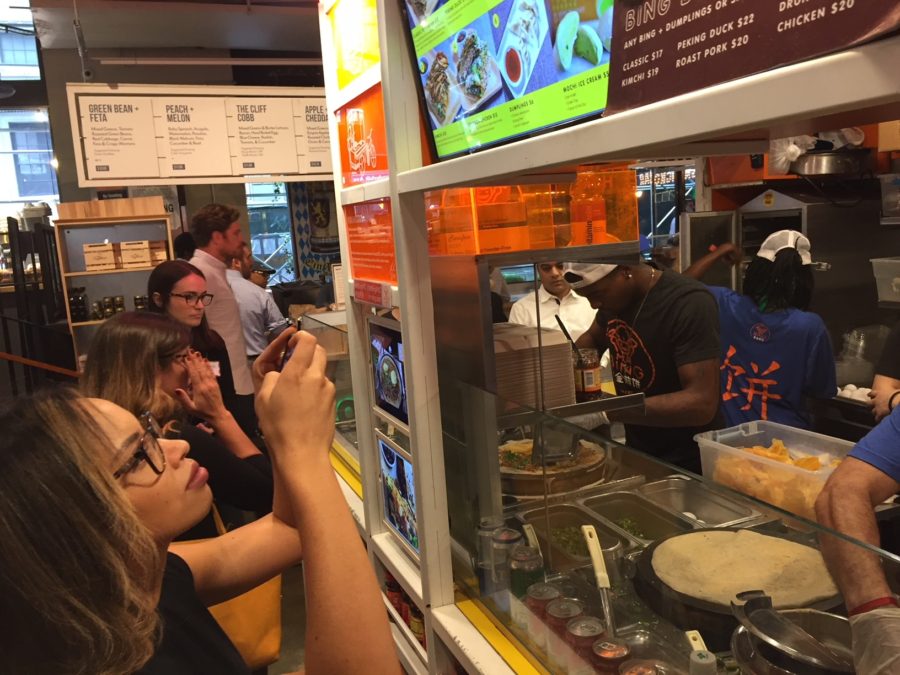
Were we forking nuts?
I came of age in the 70s – an era known for Studio 54, rock and roll, the sexual revolution, the feminist movement, and the anti-war movement. If you fell asleep in the 70s and woke up today, your head would spin with the significant changes that have happened across so many industries, and in particular, how food has evolved.
Back in the day, Hunts Snack Packs, Hamburger Helper, Tang, Stove Top Stuffing and Tab were as prevalent as organic kale, EVOO, organic grass-fed beef, and small-batch craft sodas are today. The 70s were an era that didn’t focus much on what was put into your body; Lighting up a cigarette at the dinner table was common place (as my parents did) and extinguishing it in your unfinished pile of mashed potatoes was considered acceptable.
All I can say: Our parents were forking nuts!
But that was then, an era when a new breed of consumer convenience food was a growing trend due to the rise in working mothers. According to HeinOnline, more moms entered the labor force in the 70s than ever before in U.S. History. Feminism’s gain was homestyle cooking’s loss. Inevitably, this huge societal shift resulted in some growing pains.
Processed foods, with long lists of unrecognizable ingredients, became the norm. Convenience became a lifestyle choice through chemical means and showed up on our dinner plates.
As the 80s approached, convenience was even more crucial for the faster-paced lifestyles we were living. The culinary world was in extremes. Fast food business soared as people spent more time in their cars and much less time cooking. On the other end of the spectrum, fine food establishments saw a surge due to an increase in disposable incomes.
Think back to the mall food court of yesteryear -- the indiscriminate Chinese food served in hotel pans, the standard McDonald’s counter, and the Arthur Treacher’s Fish & Chips, somehow satisfied our need back then for nourishment.
Or did it?
The death of the mall food court and the rise of the today’s urban food hall have provided an authentic take on ethnic cuisines.

Instead of
the MSG saturated grab-and-go, now you can experience traditional Vietnamese
banh mi, Chinese jianbing, authentic Israeli hummus and beyond. These all-star
lineups of taste sensations are elevated even further with community-style,
collaborative dining spaces. The new family dining room table is a public space
where your family of friends comes together to socialize and connect offline
and on.
The impact of millennials, social media, the digital world and tech on dining cannot be overstated. From “Yelping” becoming a verb, to ordering your food on your phone, to sharing your meals on Instagram and Snapchat, to digital payments platforms, technology has radically changed the way we eat.
Fast forward to Jamie Oliver’s Food Revolution of 2010, which focused on elevating the quality of school lunch programs and took a deeper dive into the importance of fresh ingredients. The public shifted their mindset for a more nutritious approach to eating and today, that trend has exploded as locally sourced, sustainably grown ingredients have fueled the farm-to-table movement. The average consumer is now well versed in the benefits and origin of their food and it’s impossible to ignore this consumer demand.
Millennials, more than any other generation, have made it abundantly clear that they value quality food and they’re prepared to spend a far greater percentage of disposable income on food than any generation before them. The challenge? Step up your game: deliver the kind of food, service, convenience, and value that people demand today. Organizations that get it right will enjoy a bigger slice of the disposable income pie and receive greater reward when these services are brought in-house to generate greater productivity in the workplace.
More than a passing trend or fad, the changes in the way we think about, grow, procure and eat food is a paradigm shift.
The bleak industrial food complex is out.
Heirloom tomatoes grown by Mary and John on the farm in your region are in.
Convenience may have been the name of the game in the 70s, but our tastebuds know better now. Society’s overall focus on wellness has been impacted by the authentic and nutritious options in the new foodscape and there’s no going back to Hamburger Helper and Tab of the generations before.
Although, I do admit on rare occasions:
I crave an ice-cold Fresca.

By Paula Schaire, Vice President of Marketing & Design, FLIK Hospitality Group
+++
For additional questions about FLIK Hospitality Group or for more information about our blog, please reach us at flikblog@compass-usa.com.